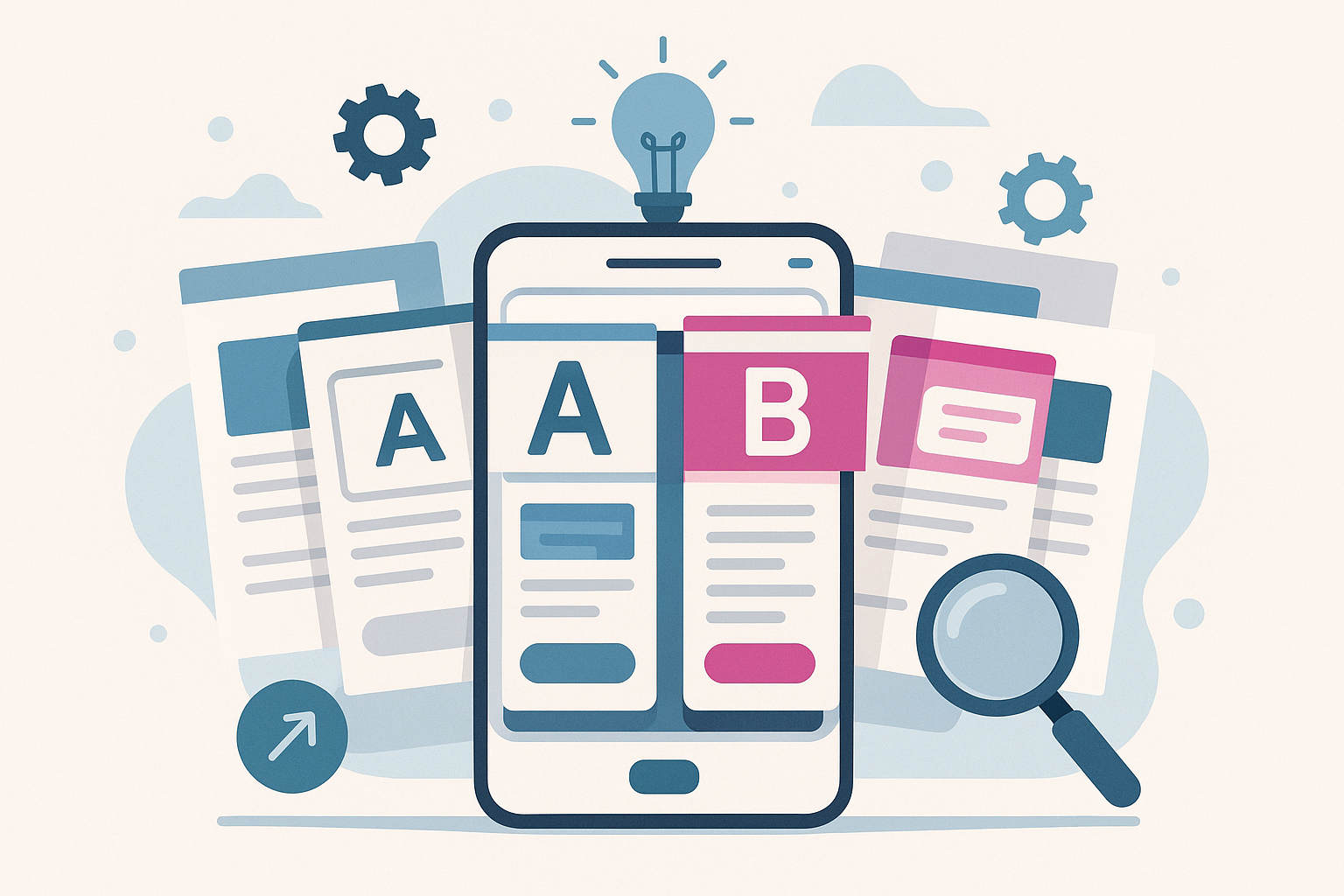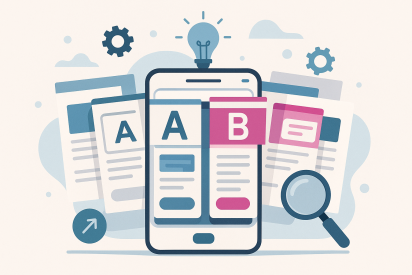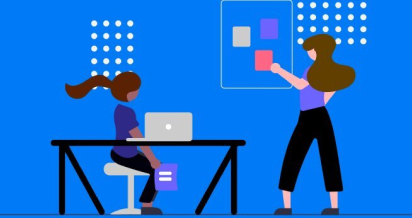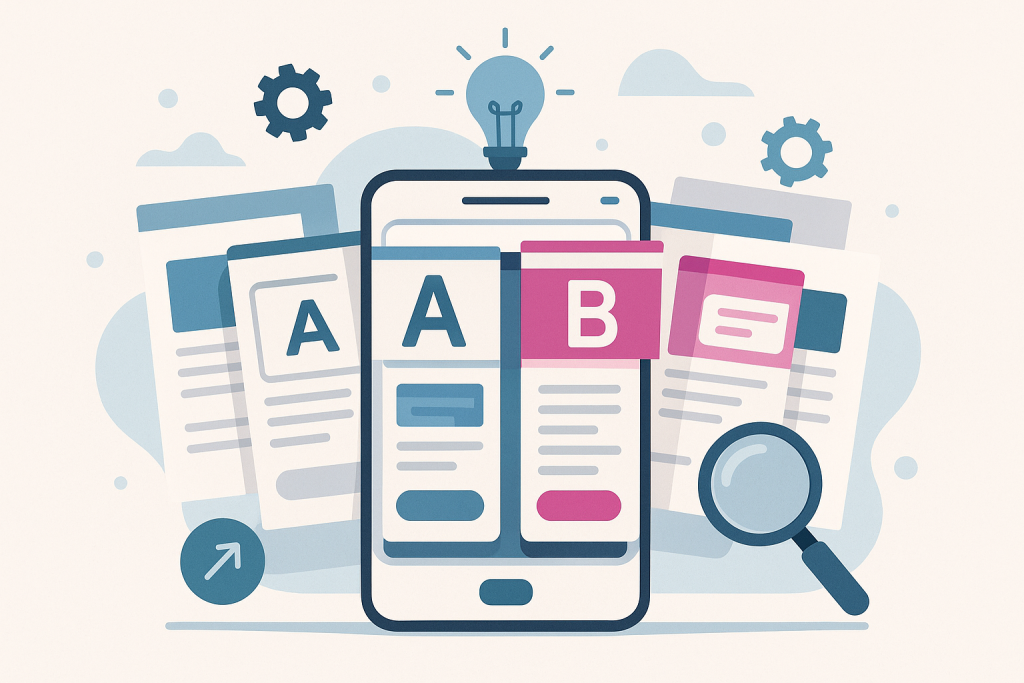
Think about how often you use your phone each day and all the tasks that you rely on apps to complete.
For most people, their device is more than just a phone. It’s a lifeline, a personal assistant, and a source of entertainment all rolled into one.
With mobile apps playing such a central role in people’s lives, it’s shocking how often businesses underinvest in App Experimentation, even those with very mature web experimentation practices.
This reluctance is always surprising, given that mobile app users are typically among a brand’s most engaged customers.
They’ve taken the step to install the app, are often logged in, and expect an experience tailored to their needs. This gives businesses the chance to create relevant, personalised interactions that strengthen customer loyalty over time.
The global mobile app market was valued at $252.89 billion in 2023, with projections showing a compound annual growth rate of 14.3% through to 2030. This growth spans a wide range of sectors, from gaming and entertainment to health, retail, and social networking.
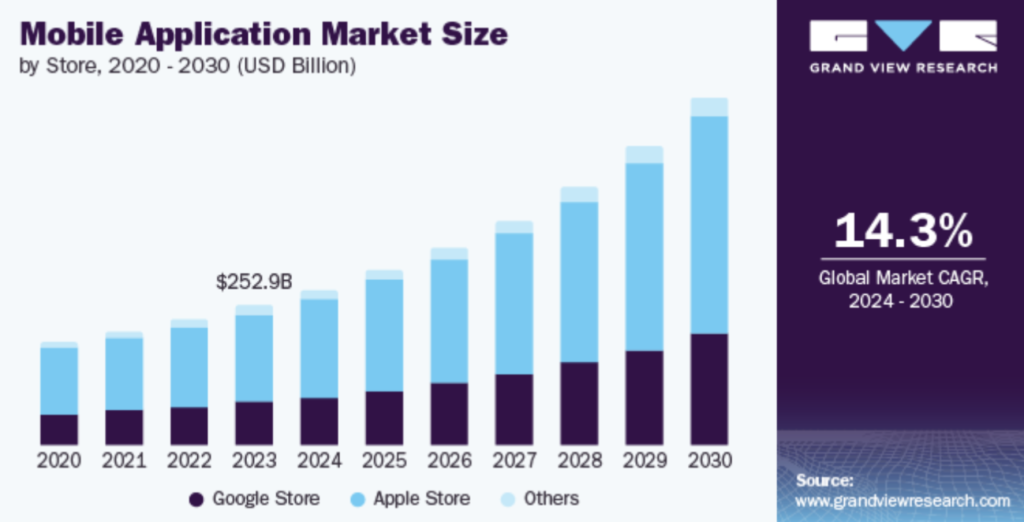
It’s clear that competition for user attention and delivering a high-quality app experience has become essential for retaining loyal customers.
And with a global screen time averaging 6 hours and 40 minutes a day (even higher for Gen Z), mobile remains a key channel for many brands.
That’s where experimentation comes in. A strong mobile app experimentation strategy enables teams to confidently roll out new features, validate product decisions with real user data, and optimise the in-app experience.
Experimentation also provides the safety-net, allowing teams to take bigger risks, be more adventurous, and discover significant additional value for customers and the business.
All of this supports long-term customer satisfaction and business growth.
How Feature Flags and Variables Enable You to Decouple Experiments from Releases
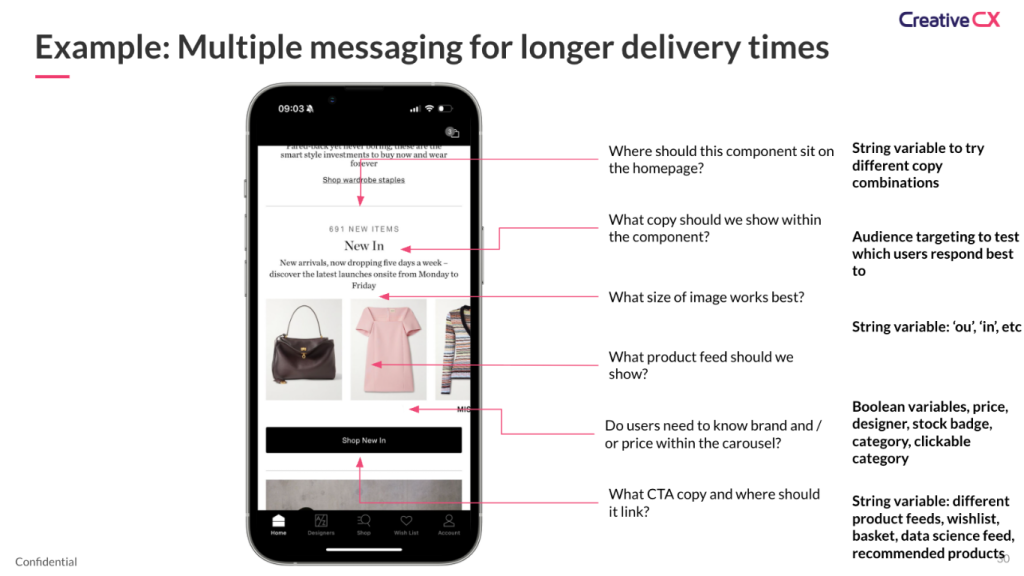
A common misconception among teams new to app experimentation is that A/B testing can only happen when a new app release is launched.
This assumption makes experimentation seem slow and cumbersome, especially when it comes to quick iterations or follow-up tests.
In reality, app A/B testing can be fast-paced with the right approach and strategy, specifically by using feature flags and feature variables. This whole area is one of the most rewarding parts of our App Experimentation training we offer to clients.
Feature flags (or toggles) let you test and roll out new features without a full app update. They give you control over releases, enabling A/B tests, gradual rollouts, and instant rollbacks if needed. You can also pre-build and hide multiple variants until you’re ready to launch.
Feature variables add further flexibility by letting you change specific elements such as UI components, positioning, styling, content, algorithms, and performance settings without redeploying any code. This allows you to run multiple experiments on the same feature after a single release.
Since mobile releases require app store approval and user updates, decoupling experiments from releases removes a major bottleneck.
By shipping a feature once and then iterating via flags and variables, you can experiment rapidly, optimise based on live user behaviour, and keep delivering a high-quality app experience.
How it’s Different to Running Client-Side Web Tests
Mobile app testing faces some unique challenges compared to web experimentation:
- Variation Fragmentation: Different operating system versions and device models can lead to inconsistent experiences across mobile apps. Unlike web teams, where a single responsive design often works across devices, mobile teams typically need to maintain separate codebases and development efforts for iOS and Android platforms.
- Performance impact: Unlike running experiments on websites, the vast majority of app implementations use SDKs with Feature Flags. This means performance concerns are largely minimised. With proper QA processes in place, teams can ensure that experiments don’t degrade with the user experience.
- Experimentation platforms: Not all platforms include the server-side SDK in the client-side package without upgrade costs, so it’s important to ensure the tool is compatible with app testing. Sometimes this means using different tools or evaluating what’s most important to the team. Do they need metrics and statistical models, or just a traffic splitter? Some testing tools do offer features that support mobile-specific challenges like A/B testing within apps or tracking user interactions across devices, but choosing the right one depends on the team’s priorities.
- Offline Data Collection: Many apps need to function even when a user is offline, but capturing and syncing data can be complex. This also ties into performance impact, as some decisions may require a response from an external server. There are various methods to address this, such as batching events when a connection is available to catching all of the information about flags upon app start-up.
- App Experimentation requires a different strategy: Working with feature flags and feature variables calls for a different way of working. You need to think ahead, plan possible iterations in advance, and decide which areas you will want to optimise, as well as the directions you are likely to explore through optimisation and iteration. It may feel unusual at first, but with the right training and coaching, teams quickly get into the rhythm. Before long, there is no going back.
Only when businesses address these challenges properly can they deliver effective experiments.
Failure to do so will likely stunt the potential benefits.
Conclusion
With mobile apps playing such a key role in both customer experience and overall business performance, neglecting experimentation is a costly mistake.
Businesses that embed experimentation into product development and the continual optimisation and innovation of their apps are better equipped to meet user expectations, respond to change, and stay competitive in the fast-moving market.
Effective mobile app experimentation helps teams to deliver and measure new functionality, increases usage, boost engagement, and improve conversions. This is the best way to future-proof your apps so that customers are going to love and return again and again.
Want to start experimenting on your mobile app?
We’ve helped teams at all stages of experimentation maturity get started, whether that means onboarding the right tools, setting up the tech, or training internal teams.
If you are looking to build in-house capability and run meaningful mobile app experiments, we are here to help.
Book a free discovery call to find out more.
